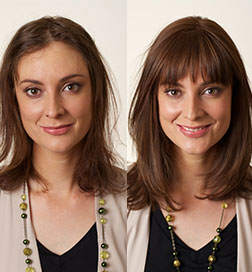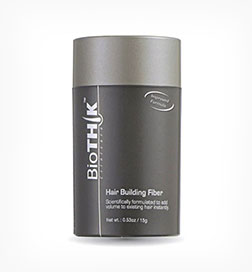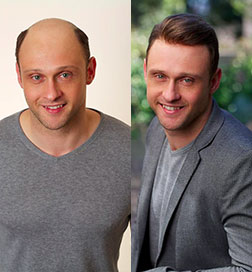According to the London Daily Mail, more people suffer from Trichotillomania than you think.
It’s hard to believe that Laura Forbes suffers from Trichotillomania – a hair pulling condition. It is estimated that 2-4% of the population suffer from Trichotillomania – the urge to pull one’s on hair out. The reasons why a person may this vary, but often it is associated with an anxiety disorder. It is typically associated with teenage girls at the onset of puberty, but it is not uncommon for it to start in early years. Men also suffer from Trichotillomania, but the numbers are much less.

Hair Pulling Addiction: Harriet Gilford, 17, with her specially designed hairpiece.
Most people completely unaware of this condition as it is kept hidden from view, this is part of the problem. Most of our clients a very good at concealing their hair loss from Trichotillomania. Shame and secrecy are part of the condition, which makes it difficult to know for certain how many people are afflicted. For those part of the Trichotillomania community the condition is commonly known as ‘Trich’ or TTM.
Laura is now only ‘pulling’ 10 hairs a day. This is quite a triumph triumph of willpower for a girl whose obsession, at its peak, left her bald from the crown to the front of her head. ‘I can finally say that I’m controlling it, instead of it controlling me,’ says Laura, 28. ‘The greatest step forward was the realisation that the urge to do it will never go, but it will become manageable. Alcoholics will always be alcoholics, but some will learn to control or ignore the urge to drink – this is similar.’
Trichotillomania is a psychological condition and often a psychologist can be employed to help. Interestingly a number of our client have found that non-surgical hair replacement options have also been very helpful – these include Topettes, Toppers, hairpieces, wigs and even Sensigraft (a nonsurgical hair grafting process that recreates the recreates a scalplike appearance and feel).
Hair replacement options for women with Trichotillomania are helpful for many reasons such as; instant cosmetic improvement to the thinning hair giving an instant self esteem boost, psychological improvement as the added hair doesn’t give the same ‘satisfaction’ as their own hair being pulled (one of our clients liked to see bulb of the hair, when she couldn’t see this from the hair replacement hair it helped her to stop pulling her hair), protection for their own hair to help decrease the risk of long term hair loss (constant pulling on the hair – whether caused by Trichotillomania behaviour or hair extensions – will cause traction alopecia and potentially long term/ permanent hair loss). As you can see from the picture, through the use of a Topper/hairpiece/ Topette, you can recreate beautiful and a natural appearance of hair.
“At times, the urge to pull is suffocating’
For women like Laura it can take years to find the help they need to overcome the maddening urge to pull out their hair. ‘I had been pulling my hair for about a year by the time my parents realised that I needed help,’ says Laura. ‘I will never forget going to see the GP and revealing the extent of the problem. He looked at me and said: “Well, stop doing it then.” (NB: unfortunately there can be many doctors who don’t understand the condition properly and don’t always have a good manner with patients).
‘Now, 14 years later, I know it’s not that simple. It was an unconscious habit – my hand would wander up to my hair, my brain would zone out and, before I knew it, there would be huge bunches of hair around me.’
The trigger for Trichotillomania is as varied as the people we meet, many cannot pinpoint one what the cause of it was. Sometimes girls start hair pulling and just can’t stop. One client said it began in a science class at school when she was told to pull out a hair and put it under a microscope. For others the trigger is a serious emotional trauma or a stress. Why do they pull hair? It becomes meditative – more “self-calm” than “self-harm” – and they often have no clue why they are doing it.
Like self-harm, pulling out hair releases endorphines – feel-good chemicals – in the brain. Often, the more painful it is, the more pleasurable it is, leading some experts to believing it is associated with sexual pleasure.
And every sufferer has her own method. Laura says: ‘For me, the front is really good – the root is bigger, deeper and harder to pull out. On the crown it is coarser and more satisfying.
‘When you pull the hair out you examine it. Bite it. It is sensual.’
To find out more information on support groups we recommend that you get in touch with your local Alopecia Areata support group, they often have a Trich group that can help.
For more information please give us a call on 1300 427 778 or jot us an email and we’ll be in touch shortly.
Sydney Hair Restoration Studio: 02 9212 4950




